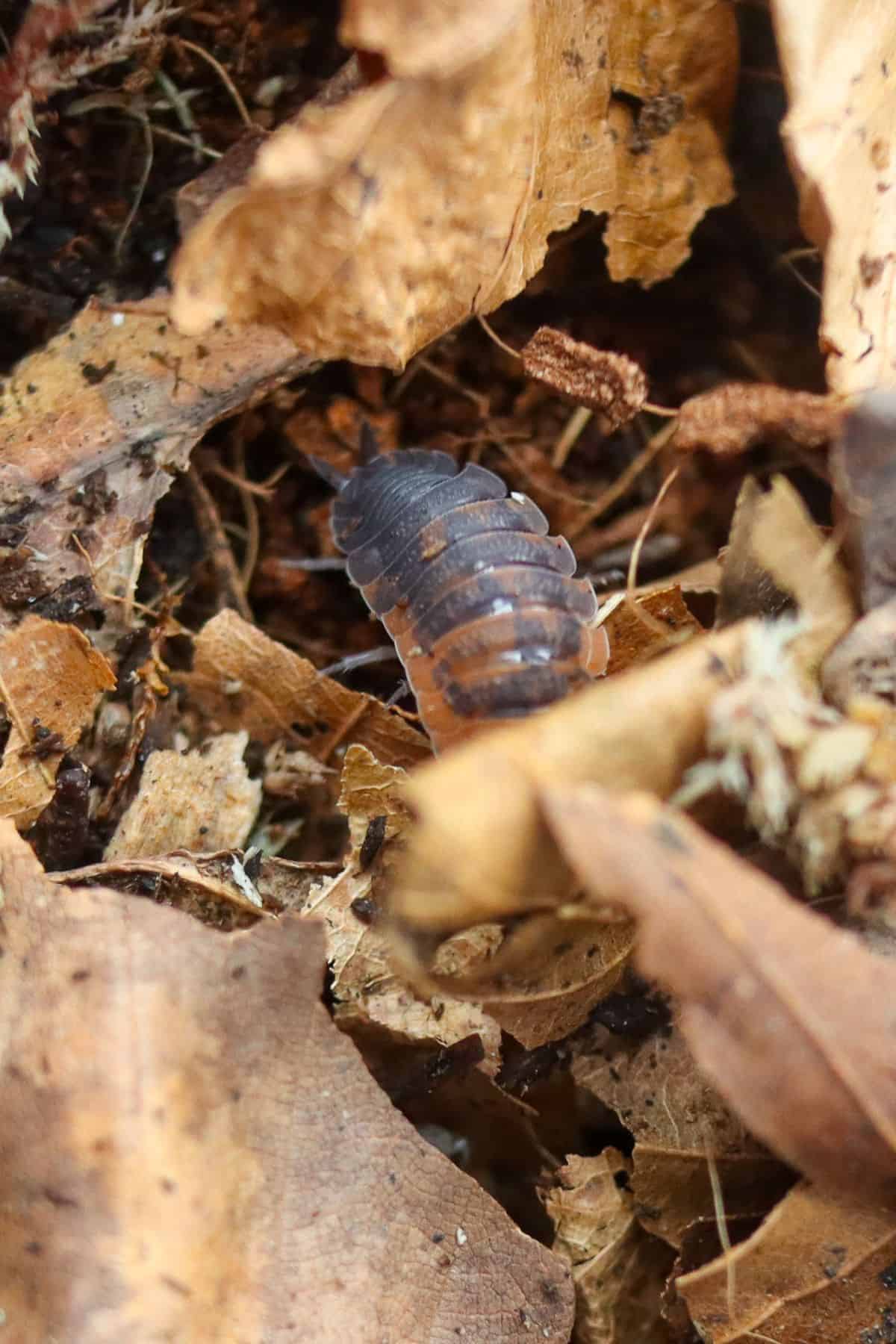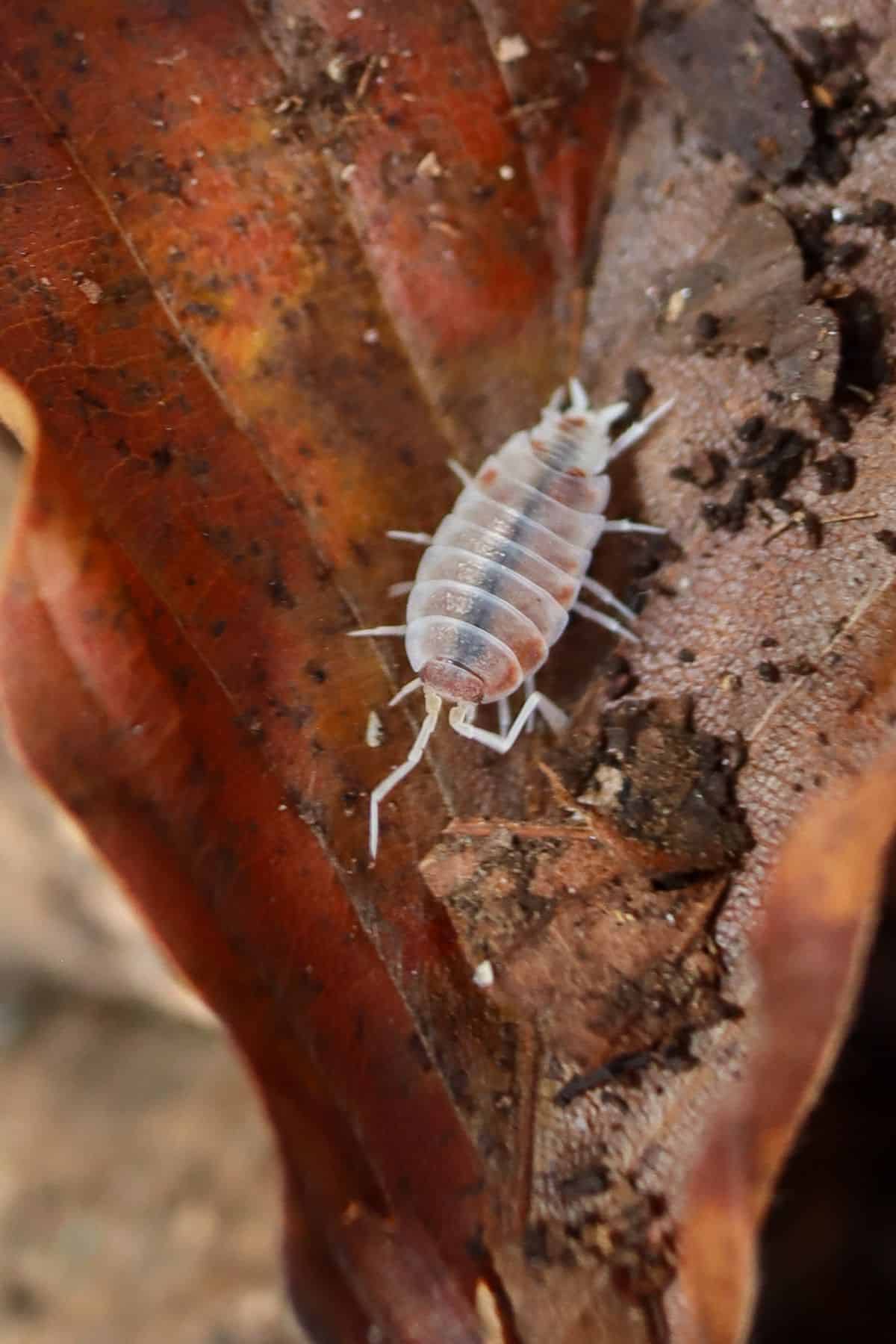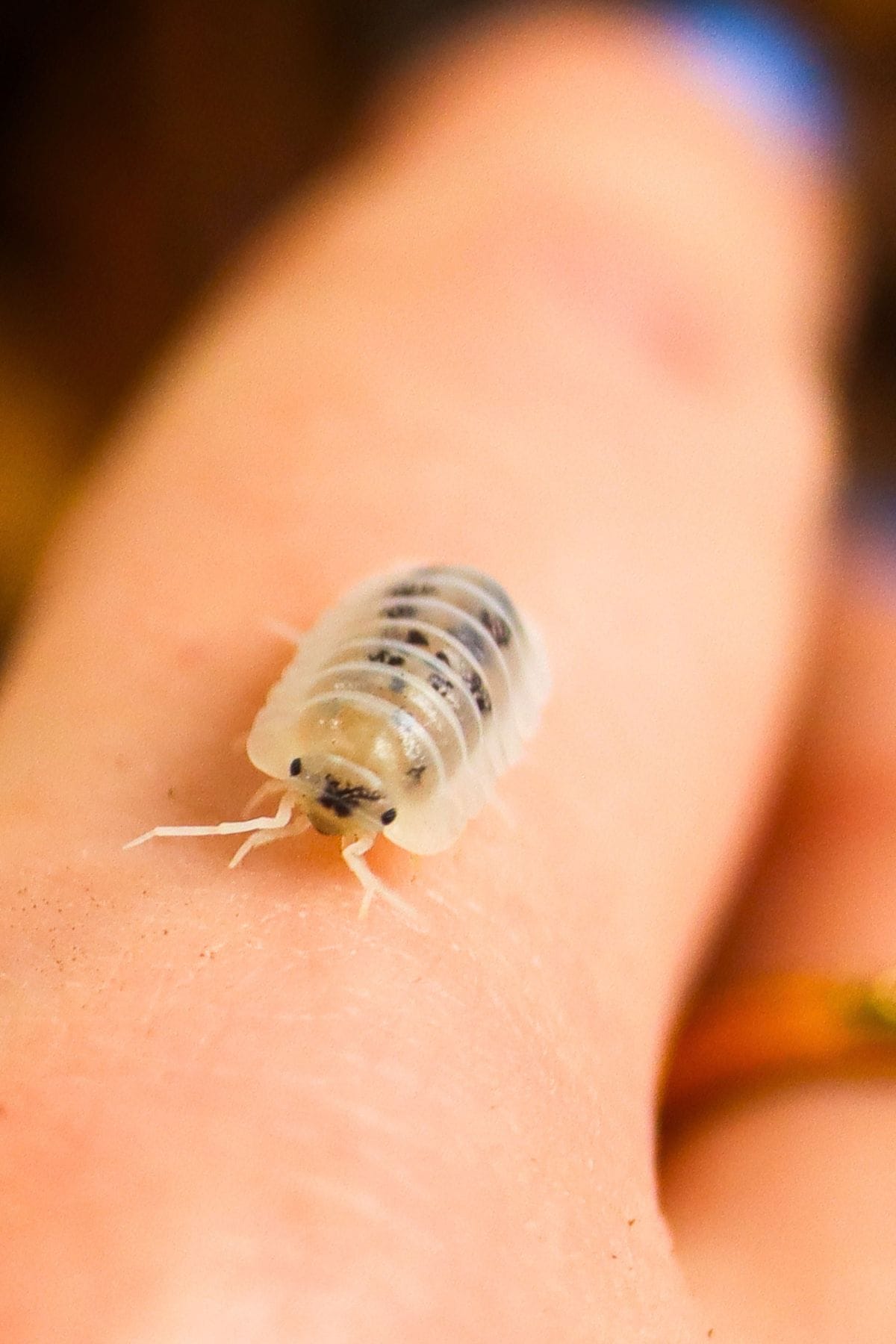You could call the Dalmatian Isopod more of an eccentric family than a specific species.
After all, any isopod species with the “Dalmatian gene” is capable of producing its own unique spotted pattern. It’s no wonder these spotted wonders are amongst the most varied (and sought-after) isopod varieties on the market.
That said, one species is arguably the defacto Dalmatian.
In this guide, we’re going to explore some of the best 101 dalmatian isopods on the market and figure out who is really the top dog.

Terrarium Tribe is reader-supported. When you purchase through links on our site, we may earn an affiliate commission (at no further cost to you). 💜
Popular (and Rarer) Dalmatian Isopods
Just a quick primer before we jump in.
Though many stunning spotted isopod species are on the market, a “Dalmatian Isopod” is technically only born of the specific Dalmatian mutation.
Other genes (like the Koi gene) give rise to similar visual effects through different means. Visually, there’s not always much of a difference, but there certainly is when it comes to breeding.
That aside, without any further ado, here we go.
1 | Porcellio scaber ‘Dalmatian’
Porcellio scaber ‘Dalmatian’ is undoubtedly the classic option.
Prized for its characteristic black-and-white spotted look, it better fits the Dalmatian brief than any of the others on this list.

But does a close resemblance make it the best isopod? Let’s find out.
I’m pleased to say P. scaber ‘Dalmatian’ is not all bark and no bite.
These versatile critters are super adaptable, breed quickly, and are easy to care for – making them suitable for almost any setup. Average household temperatures and typical humidity levels of 70%+ should be absolutely fine, so they’re a great choice for a bioactive vivarium, too.
And growing up to around 1.5cm in size, P. scaber ‘Dalmatian’ is a relatively large species that can certainly pull its weight when it comes to bioactive cleaning duties.
👉 Grab the classic Porcellio scaber ‘Dalmatian’ Isopods right here from our partners, Rubber Ducky Isopods.
They also come in a cool ‘Orange Dalmatian’ variety too! Not to be confused with the ‘Orange Koi” Isopods,’ which look very similar but result from a different gene expression.

2 | Dairy Cow Isopods (Porcellio laevis)
Dairy Cow Isopods are the other hot contenders for the Dalmatian Isopod crown.
Sporting mottled black and white carapaces, they have a slightly different take on the classic Dalmatian look.

If I were a judge on Crufts comparing Dalmatian Isopods to Dairy Cows Isopods, I’d give the bovine option points for size and their stronger look, but they lose points for visual accuracy.
At almost 2cm fully grown, these critters can get pretty big.
Like the Porcellio scaber Dalmatians, Porcellio laevis are excellent bioactive custodians. Their active nature combined with a large appetite makes them effective cleaning machines.
I wouldn’t advise mixing them with any other isopod species, though. Competing with these tanks is hard, and they don’t always play nice.
3 | Porcellionides pruinosus ‘Orange Cream’ & ‘Oreo Crumble’
For those who love the classic Powder Orange and Powder Blue Isopods but fancy a little more oomph, these two Porcellionides pruinosus color morphs are perfect.
They have all the same bioactive power, now in some fresh colors!
First up, we have the classic black-and-white mottled Oreo Crumble Isopods.

Then, we have the pied variety with a mottled brown/orange coloration.

👉 Shop Oreo Crumble Isopods and Orange Cream Isopods.
4 | Japanese Magic Potion Isopod (Armadillidium vulgare)
Here, we add some serious color to the mix!
The Japanese Magic Potion Isopod has an interesting approach to the Dalmatian gene.
As it only affects dark pigments, some of the dark elements of the carapace have been stripped to a creamy translucent white. Leaving behind dark spots and some characteristic acid-yellow splashes.

The contrast really is electric, and it’s fascinating to see genes play out this way.
You can get this species from two distinct lineages: American and Japanese. The American is larger and more visually distinctive, but the Japanese are much easier to breed.
5 | Shiro Utsuri Isopods
Finally, we have our favorites from the list.
Shiro Utsuri Isopods look a bit like the long-lost cousins of the Dairy Cows.
Instead, they’re named for their resemblance to a Japanese koi fish. Honestly, they’re still pretty big, but they’re more of a gentle giant than their bovine counterparts.

Dalmatian Isopods – A Final Word
Dalmatian Isopods are popping up thick and fast these days, but we’re on top of it!
As the isopod hobby grows, we’ll likely see more and more species emerge with the Dalmatian gene, and honestly, I’m here for it. We’ll continue to explore these new varieties, and hopefully stock them on our store too.
Ready to start a Dalmatian colony? Buy isopods from our collection today.
